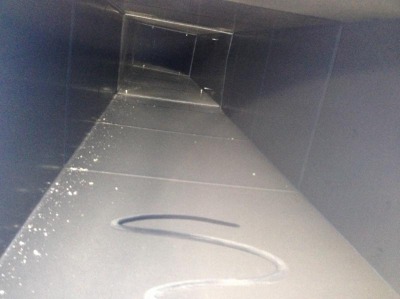There's often reference to cleaning according to "NADCA Specification." The newest NADCA specification is "ACR NADCA Standard 2013." Section 5 - Cleanliness Verification and Documentation outlines the process to determine if the duct cleaning passed the NADCA Standard. It is important to know that section 5.1 specifically states that cleanliness verification "is done immediately after HVAC system component cleaning and prior to use in operation." That means your ductwork will be cleaned to NADCA specification that day, not days later.
Day-of cleaning and control measures instituted by a reliable duct cleaning company are highly important. Construction dust is present on all job sites, and can contaminate the ductwork if not taken care of at the time of installation. Of the three methods of cleanliness verification - visual inspection, surface comparison testing and NADCA Vacuum Test - the NADCA Vacuum Test is the most stringent. To pass this test, a 100 centimeter square surface has to be proven to be clean of any dust in excess of 0.75 mg. For example, if you crush one-tenth a baby aspirin and spread the particles in the 100 square centimeter surface, you would fail the NADCA Vacuum Test. Duct & Vent Cleaning of America, Inc. provides ductwork so clean that it regularly passes the NADCA Vacuum Test.
Too often, contractors do not want to spend the money to clean new ductwork on a project and try to remove the requirement from the spec. They claim they protected the ductwork at their shop by wrapping it in plastic, and they allege they protected it after it is hung by covering any openings. Both procedures fail time and time again. Unless the ductwork is being installed in an absolutely dust free environment, it WILL get contaminated. Even without plastic tearing or exposure to the natural elements, construction dust gets into the ductwork upon installation, and the contractor invariably has to spend excess money from a budget to address the unplanned, dirty "new" ductwork.

